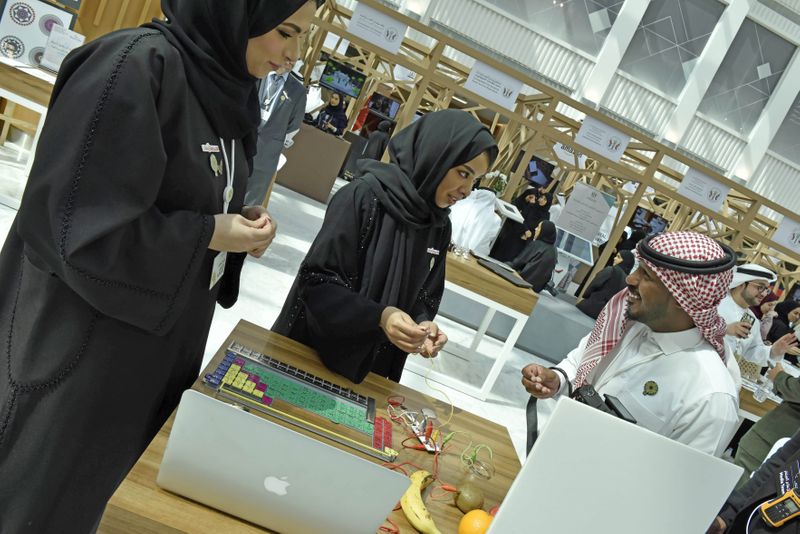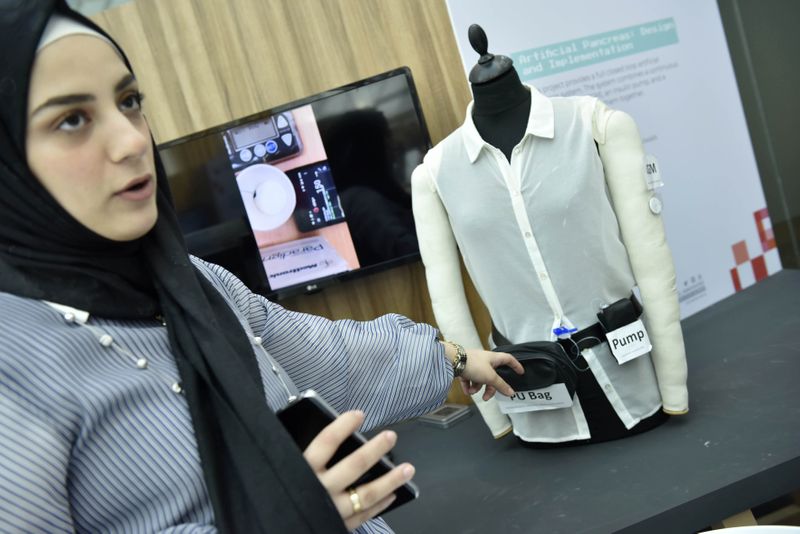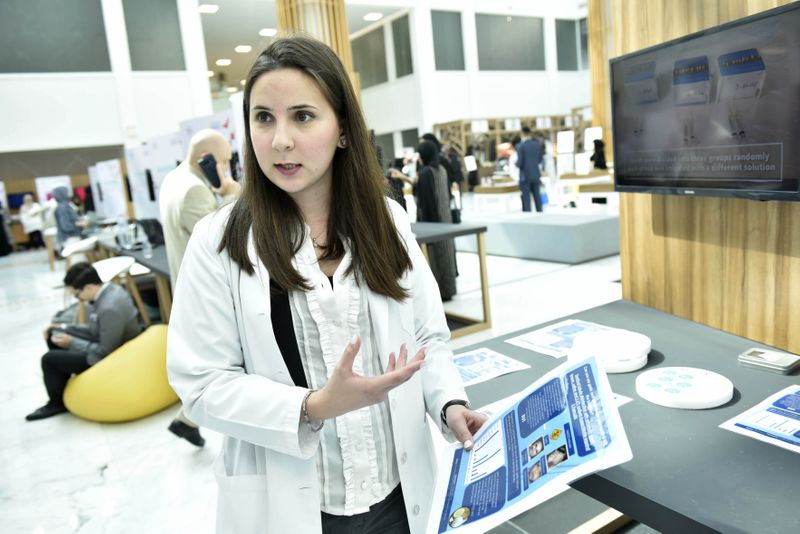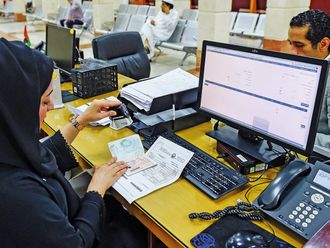
Sharjah: Out-of-the-box solutions for a variety of sectors, including health, have gone on display in Sharjah as part of the UAE Innovation Month (February).
This week, the month-long programme is being held in Sharjah and it will have covered all emirates in phases by the end of February.

On Saturday, the Sharjah leg of the programme was inaugurated by Shaikha Bodour Bint Sultan Al Qasimi, Chairperson, Sharjah Investment and Development Authority (Shurooq). The activities in Sharjah are being held under the patronage of Shaikh Sultan Bin Mohammad Bin Sultan Al Qasimi, Crown Prince and Deputy Ruler of Sharjah.
The week-long event in Sharjah, held at Sharjah Book Authority, features more than 80 Sharjah and UAE government organisations, universities, and local and international companies.
Participants are showcasing their innovative projects, holding workshops and meeting to exchange ideas in new technological fields.
Focus on health
Students from the University of Sharjah (UoS) are among those displaying their prototypes for improving the health and safety of patients, with some using wearable technology.
‘Walkie’ device
A student team from UoS has developed ‘Walkie’, a flexible device secured to the shin and connected to the shoes that alerts blind persons about dangers, obstacles or stairs by sending voice prompts to headphones.
Walkie has obstacle-detection sensors and ultrasonic sensors that activate voice feedback telling the blind person to take action to avert collision, said Farah Abu Madi, a presenter for the project, developed by senior-year industrial engineer students Heba Quteineh, Samar Al Hattab, Israa Qassim and Dana Khalouf.
Walkie can also direct its wearer up the stairs once it ‘sees’ steps. “There is a panic button in case the blind person loses his or her way. When the button is pressed, it sends the location of the person to family or authorities,” she added.
Artificial pancreas
Another wearable tech project is a blood-glucose (BG) monitor that automatically detects BG levels and administers the needed dose of insulin for diabetic people. The sensor is essentially a small patch attached on the body that reads the BG level, which is sent by Bluetooth to a controller inside a belt worn by the person.
The reading is processed by the controller’s machine-learning technology to understand if the patient does, or does not, need an insulin dose, using various algorithms and codes.
In case a dose is required, a request is sent to a small pump, carried in a small sack in the belt, with the required dose to inject into the body, via a fine needle.
“A new reading can be taken every five minutes afterwards and the patient doesn’t feel any pain or discomfort. When the BG level returns to normal, the system will not take any further action. Some children are diabetic and cannot administer insulin by themselves,” said Sara D’yab, a UoS graduate and member of the team that made the device, which includes Dr Anwar Jarndal, Hind Al Owais, and Bodoor Alabdullah.

Organic bacteria killer
Dental students at UoS have developed what they say is an organic and safe alternative to widely-used chemical disinfectants following root canal treatment.
Sima Habrawi said the synthetic chemical NaOcal is the most common and “gold standard” solution to treat bacteria inside the tooth after a root canal but can and has lead to burns, bruises and swelling in many cases.

“Even in the hands of very experienced doctors, we still have those problems because it’s a corrosive material,” said Habrawi.
She and her teammates used extracts from lemon and garlic and ethanol to create a solution that has been tested to “kill bacteria to a comparable percentage [as NaOcal] and it’s all natural”.
“We also need to test all of the effects of the solution, not just what it does to bacteria... We need to see, for example, if our solution will change the integrity of the tooth or not.”
The formula of the solution is a secret, but it is includes an isolate from garlic, Habrawi said. “The star of our show is the garlic because there is a very important component inside garlic, which we will not reveal,” she added.
Habrawi and teammates Mustafa Matouk, Hadir Abdulla, Zain Sawalha and Dina Mansour are senior students at the College of Dental Medicine, UoS.












